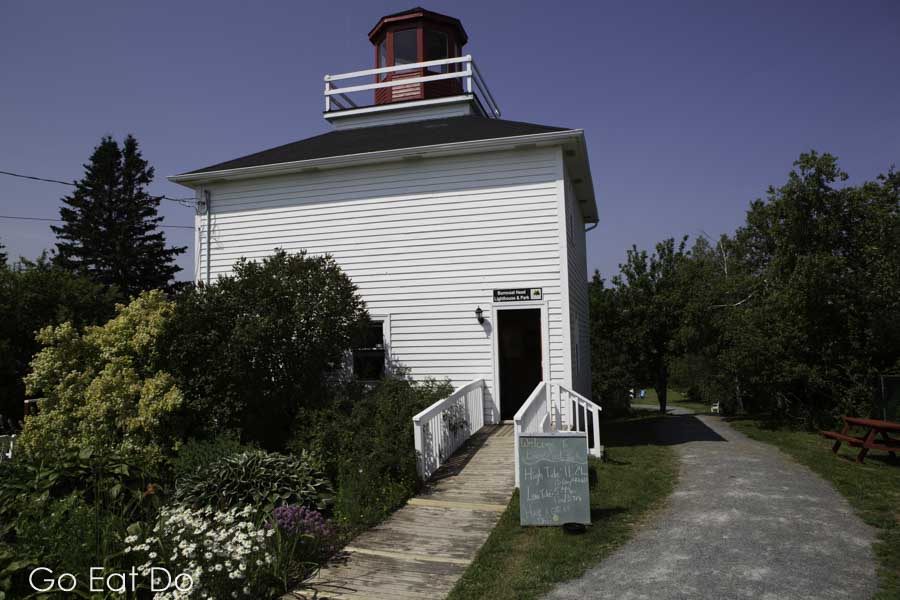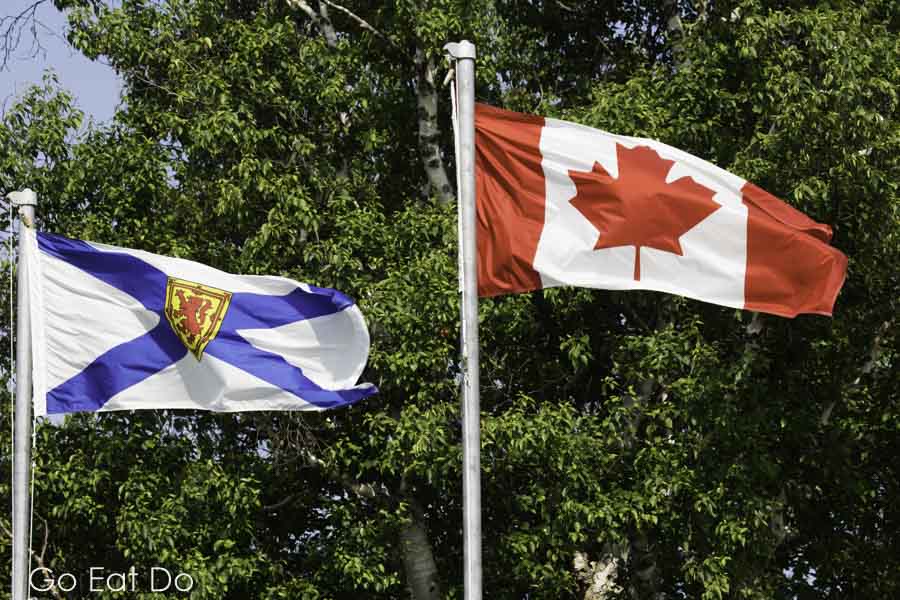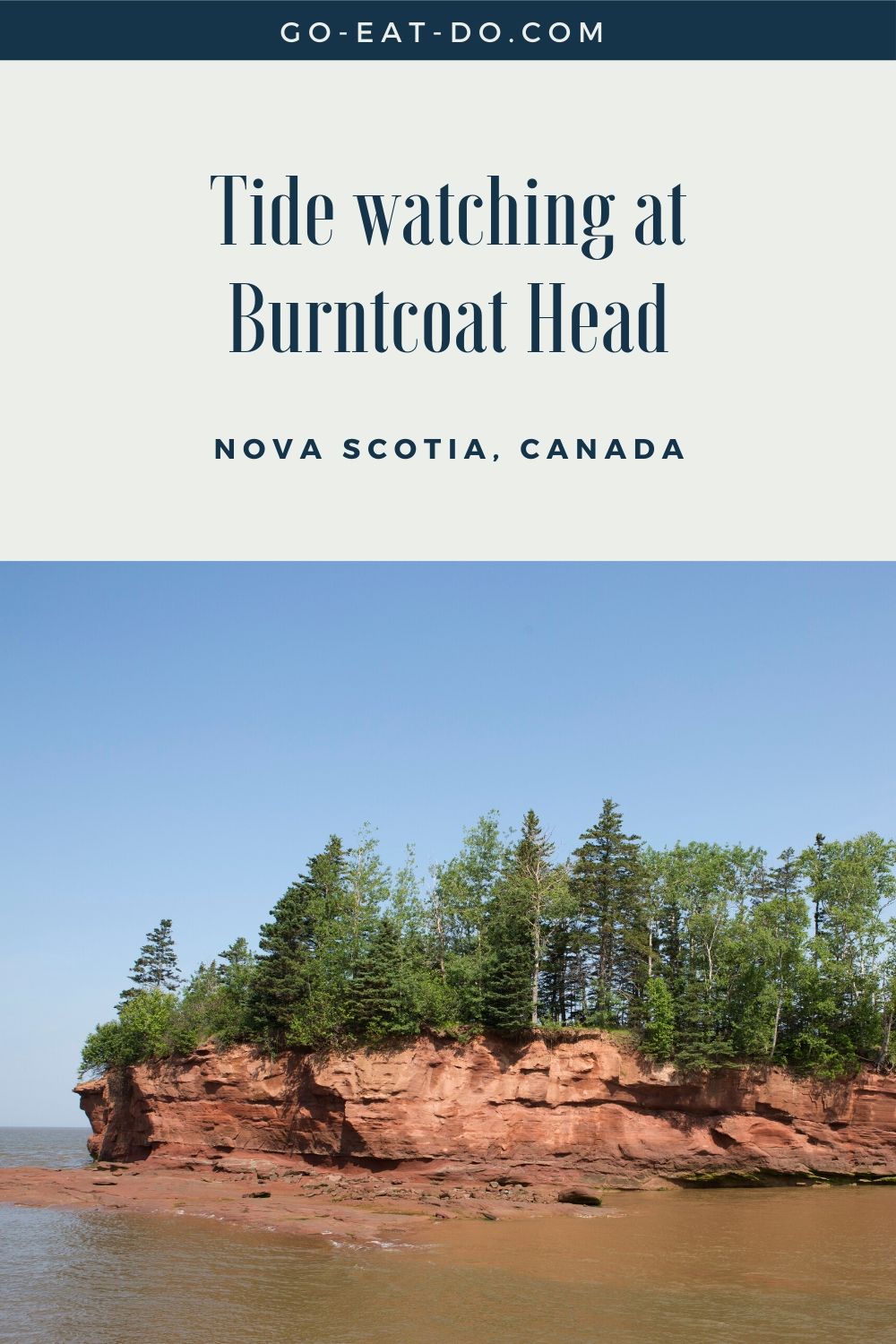Stuart Forster visits Burntcoat Head Park in Nova Scotia, Canada, to find out about Bay of Fundy tides and the nature of the area.
Disclosure: Some of the links below and banners are affiliate links, meaning, at no additional cost to you, I will earn a commission if you click through and make a purchase.
In 1975 Burntcoat Head in Nova Scotia, Canada, entered The Guinness Book of Records as the place where the world’s highest average tide was recorded. The difference in the water level between low and high tide was measured at 47.5 feet—around 14.50 metres.
I learn those facts from Nancy, my guide, while we’re watching the tide lap in. She’s quick to add that spring tides rise as much as 53.6 feet (16.34 metres).
We’re standing opposite an eroded island. A number of overhanging trees with exposed roots look like they’ll soon be claimed by the cold Atlantic water.
“Ice, three to six feet deep, built up on the back side of the island in January. It expands and takes the mud with it…we call the ice flows chocolate marshmallows here because that is exactly what they look like,” says Nancy with a laugh.
Dining on the Ocean Floor
She points to the area below us and explains that, at low tide, it’s possible to dine at tables set out on the ocean floor. The event is known as Dining on the Ocean Floor and is held several times each summer. An expert takes participants foraging for ingredients and local seafood is served.
Nancy is one of the interpreters working in Burntcoat Head Park, close to the former shipbuilding community of Noel.
Look on a map and you’ll see how the headland juts out from Nova Scotia’s western shoreline, between the Minas Basin and Cobequid Bay.
Burntcoat Head lighthouse
The lighthouse at Burntcoat Head was decommissioned and burnt down back in 1972.
In the 1990s locals approached the Coast Guard and acquired the plans of the landmark that had stood from 1913 until the early 70s. The wood-built lighthouse that you’ll see today was officially opened on Canada Day—1 July—1995.
Burntcoat Head’s first lighthouse was erected in 1858 but, ultimately, became a victim of land erosion.

Erosion reveals fossils
The destructive power of the sea regularly reveals fossils embedded in the muddy shoreline. They include dinosaur tracks, plants and skeletons dating from the Carboniferous Period, around 299 to 360 million years ago.
“A white line is usually the outline of a fossil,” states Nancy.
Amethyst is often found in the area during April though Amethyst Cove, near Cape Split, is a more reliable source. Agate and jasper also wash up here.
Nancy wears shoes while out on the ocean floor because it’s not uncommon to find glass, which she terms mermaids’ tears, “because every time we throw garbage into the ocean a mermaid will cry.”
Locals pick up the smooth, sea-worn glass to create jewellery.

Burntcoat Head Park in Nova Scotia
We’ve already strolled through the woodland close to the lighthouse and spotted hummingbirds.
A woodpecker drills into a nearby trunk and the noise reverberates through woodland also providing habitat to deer, chipmunks, skunks and groundhogs.
Nancy says it’s common to spot foxes and raccoons feeding on the ocean floor at low tide.
“I love this place because, to me, it’s an opportunity to show people that we’re all connected—this ocean, this planet, these people who come to see this. You can’t come here without feeling love. People who come here from away, when they come up to you and look at you with wonderment in their eyes, there’s nothing better than that,” says Nancy.
The power of nature
“I’ve looked for home my entire life and this is home. It’s beautiful. It’s powerful. It’s healing,” she adds with emotion.
The area is popular with locals and people from further afield. Some come for picnics, others to experience nature or to take a look at the interpretative exhibitions within the lighthouse.
“It talks to people. I’ll take people out on the ocean floor and I usually stand next to the water. People will look at me and ask me what I’m doing and I’ll say I’m checking whether the tide is coming or going. Usually, I ask people to stand there, close their eyes and feel the power,” answers Nancy when I ask her what she thinks makes the area special.

Burntcoat Head tide times
Check the tide times for Burntcoat Head via the Tide Forecast and Tideschart websites.
Map of Burntcoat Head
The map below shows the location of Burntcoat Head in Nova Scotia. Zoom into the map for more details or out to see the location of the park:
How to get to Burntcoat Head
Burntcoat Head Park is approximately 1.5 hours drive north of Halifax, Nova Scotia’s provincial capital. Join Route 354 at Lower Sackville then continue along the Burntcoat Road at Noel.
If you are following Route 215 along the shore, keep an eye open for signs to Burntcoat Head between Minasville and Noel.
Hotels near Burntcoat Head
Search for accommodation near Burntcoat Head Park via Booking.com:
Books about Burntcoat Head
Visiting Burntcoat Head in Nova Scotia? You can buy the following books via Amazon by clicking on the links or cover photos:
The Guinness Book of World Records:




Further information
See the Burntcoat Head Park website for information on the lighthouse and nearby attractions. Dogs must be kept on their lead while in the park
The Nova Scotia Tourism and Destination Canada websites also provide information about the headland and surrounding region.
Thank you for visiting Go Eat Do and reading this post about Burntcoat Head Park in Nova Scotia. Planning a trip to the province? You may be interested in posts about scenic drives in Nova Scotia and the Go Eat Do guide to 48 hours in Halifax.
Stuart Forster, the author of this post, is an award-winning travel writer who has visited Canada many times. His work has been published by magazines including National Geographic Traveller and Wanderlust.
Photos illustrating this post are by Why Eye Photography.
If you enjoyed this post why not sign up for the free Go Eat Do newsletter? It’s a hassle-free way of getting links to posts on a monthly basis.
‘Like’ the Go Eat Do Facebook page to see more photos and content.



